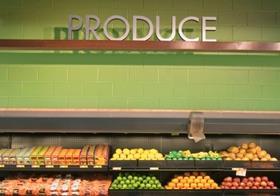
A new report published by the Food and Agri Research division of Netherlands-based group Rabobank has predicted that the global market share of private- and own-label food products is set to double from the current 25 per cent to 50 per cent in 2025.
The report, entitled 'Private label vs Brands – an inseparable combination', suggests that so-called A-brands will retain their importance for retailers because they will, it says, anchor categories’ price levels and give consumers choice and products they recognise.
'The good news for consumers is that they will still have access to familiar brands and have greater access to lower priced private label products,' says the report's author Sebastiaan Schreijen, associate director of processed food and retail at Rabobank.
Marketers of smaller secondary brands (referred to as B-brands) will have to reposition their strategies in order to avoid being squeezed out of the market, the report adds.
'Two strategies are open to B-brands suppliers,' Mr Schreijen continues. 'Either invest in quality and target the premium market, or specialise in private label.'
A consolidation spree among private label specialists is inevitable to achieve economies of scale and reduce the cost base, he adds.
Rabobank's conclusion that global private-label penetration will reach 50 per cent by 2025 is based on assumptions about food retail market structure.
The report lists 11 drivers for private-label growth, including continued industry consolidation in developed food retail markets such as western Europe, the US and Australia and the adoption of modern retail in developing markets like central and eastern Europe, Russia and Turkey.
Increased consumer acceptance of private label following the recession will also aid the segment's growth, the report contends, as will further growth in the hard discount arena and professionalisation of private label supply.
Mr Schreijen concludes: 'Our research shows that private label and A-brands are an inseparable combination. Like love and marriage, you can't have one without the other. But where two's company, three's a crowd. This report is an early warning to B-brand suppliers to adapt their strategies to survive.'






No comments yet